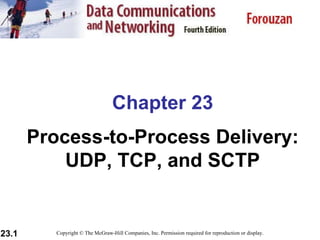The document provides an overview of three transport layer protocols: UDP, TCP, and SCTP. It discusses their features such as connection-oriented vs connectionless delivery, reliable vs unreliable transmission, and use of ports, segments, and packets. Examples are given of how each protocol handles tasks like flow control, error control, and establishing connections between processes. Diagrams illustrate concepts like sliding windows, checksum calculation, and protocol headers.
























































































